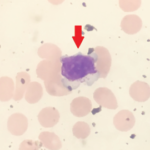“The guidelines suggest the appropriate person for either of these procedures should have had a vertebral fracture with pain that has not resolved with at least two weeks of conservative treatment,” says Robin Dore, MD, clinical professor of medicine at the David Geffen School of Medicine at the University of California, Los Angeles. “It is also essential that an MRI be obtained to confirm that there is not a burst fracture present. PVA is contraindicated in that type of fracture because the cement can migrate and impinge on the spinal cord.” The most recent guidelines were published last year in the Journal of Vascular and Interventional Radiology.2
Although there have been no randomized trials comparing the two methods on outcome and efficacy, the guideline authors looked at the literature that was available on the subject. They stated, “The Societies [involved with the guidelines] have determined that the clinical response rates in individuals [treated with kyphoplasty] is equivalent to those seen in patients treated with vertebroplasty.” They also saw no proven advantage in pain relief, vertebral height, or complication rate.
Most of the complications associated with both procedures center around leakage of the PMMA. During injection, leakage of cement into the spinal canal can cause compression of the nerves or spinal cord that can lead to permanent neurologic injury even with surgical removal. Some instances of the cement entering circulation and then the lung causing an embolus have been reported. Rib fracture or pedicle fracture can occur during needle placement. Bleeding and infection are rare. Most series suggest a complication rate around 2%.
Two experts interviewed for this article still suggest caution. “One of the reasons we may not have seen a lot of ill effects is because they aren’t really being done on a routine basis yet,” says Elinor A. Mody, MD, associate physician in the division of rheumatology, immunology, and allergy at Brigham and Women’s Hospital in Boston. “As we know from recent experience with medications, the time we really find out about the downsides is when it becomes more widely used.”
Dr. Smuck says that while this may have been true five years ago, more recent data suggest that the reported complication rates are accurate even with the rapid growth in the number of physicians performing these procedures.
Are These Procedures Done Too Often?
There remains some concern about the need for some of these procedures in the first place. Dr. Dore notes that while studies report that 60% to 90% of patients are pain free within 24 hours, at six weeks, six months, and one year, there are no differences seen in quality of life between those getting one of the procedures and those treated conservatively.


